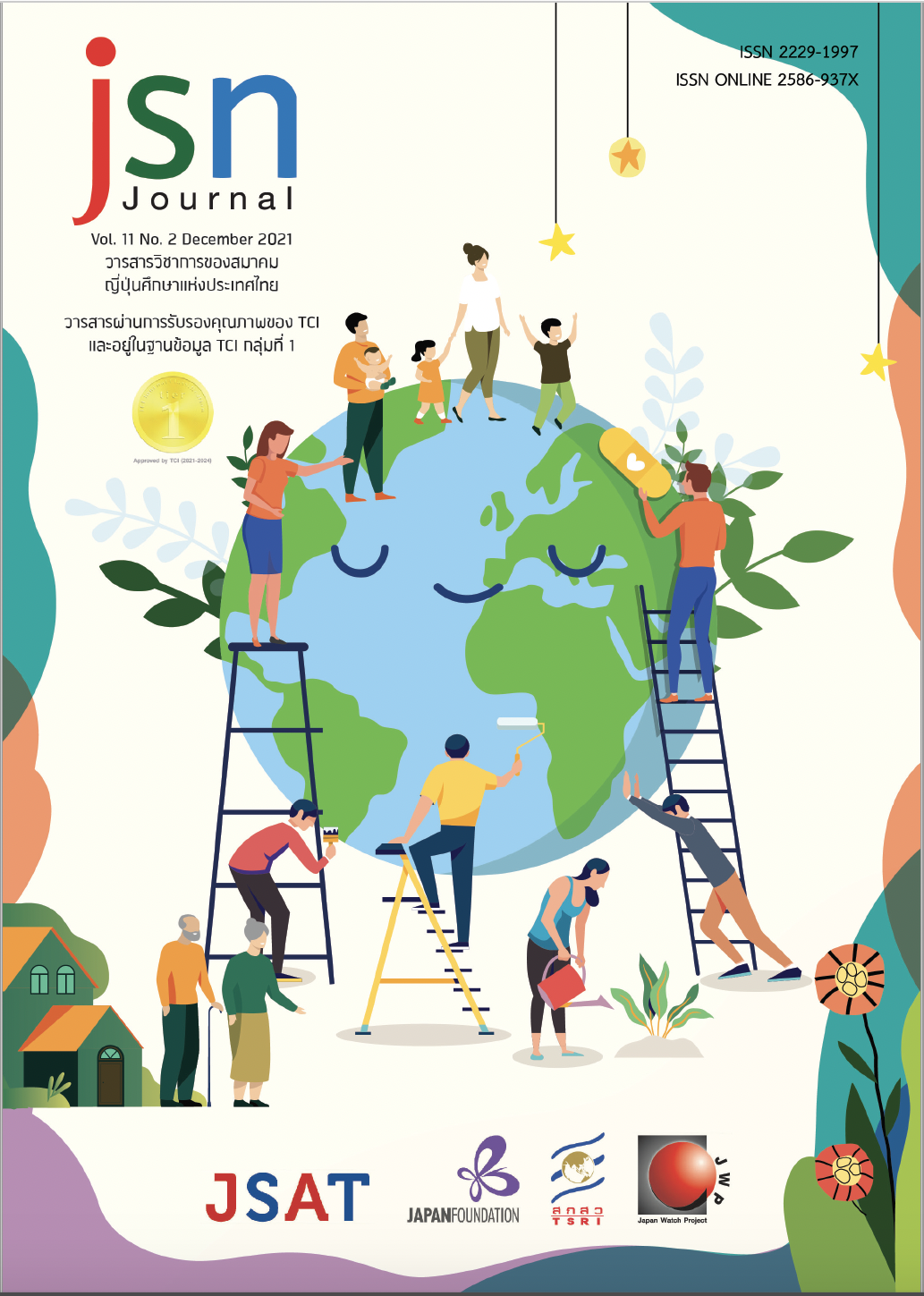Woman and Child in the Love-miracle Noh Plays
Main Article Content
Abstract
This research aims at studying the images, the power and the negotiation of woman and child characters in the 5 Love-miracle Noh Plays: Aisomegawa, Take no yuki, Tanikou, Danpuu and Matsuyamakagami. The research also studies the issues of the thoughts and beliefs found in the 5 Love-miracle Noh Plays. The research finds that the woman and child characters portray both the positive and the negative images, but mainly in the positive images. However, the positively portrayed behaviors cannot definitely result in the character fulfilling. The woman characters show a greater proportion of the power than the negotiation. On the contrary, the child characters show a greater proportion of the negotiation than the power. Additionally, the research finds that most of the Love-miracle Noh Plays are shown in line with the thoughts and beliefs of the ancient Japanese people.
Article Details

This work is licensed under a Creative Commons Attribution-NonCommercial-NoDerivatives 4.0 International License.
ข้อความและข้อคิดเห็นต่างๆ ในบทความเป็นของผู้เขียนบทความนั้นๆ ไม่ใช่ความเห็นของกองบรรณาธิการหรือของวารสาร jsn Journal
References
สิริมนพร สุริยะวงศ์ไพศาลและวินัย จามรสุริยา. (2563). ภาพลักษณ์พ่อแม่ลูกญี่ปุ่น. กรุงเทพ : สำนักพิมพ์จุฬาลงกรณ์มหาวิทยาลัย.
天野文雄 (2019). 『能楽手帖』. 東京:角川ソフィア文庫.
石井倫子(2003). 「解体する「家」とその再生―〈藍染川〉の世界を中心に―」『日本文学』52(7) : 66-74.
小田幸子(1995). 「能の中の「メロドラマ」恩愛霊験能をめぐって」『能劇学』2: 1-15.
佐成謙太郎(1982). 『謡曲大観 第一巻』. 東京:明治書院.
_______. (1982). 『謡曲大観 第三巻』. 東京:明治書院.
_______. (1982). 『謡曲大観 第五巻』. 東京:明治書院.
女性史総合研究会、編者(1990). 『日本女性生活史2中世』. 東京:東京大学出版会.
総合女性史研究会、編者(2008). 『日本女性の歴史』. 東京:角川選書.
高松百香(2018). 「中世の結婚と離婚―史実と狂言の世界-」『武蔵野大学能楽資料センター紀要』29 : 41-55.
野村育世(2004). 『仏教と女の精神史』. 東京:吉川弘文館.


